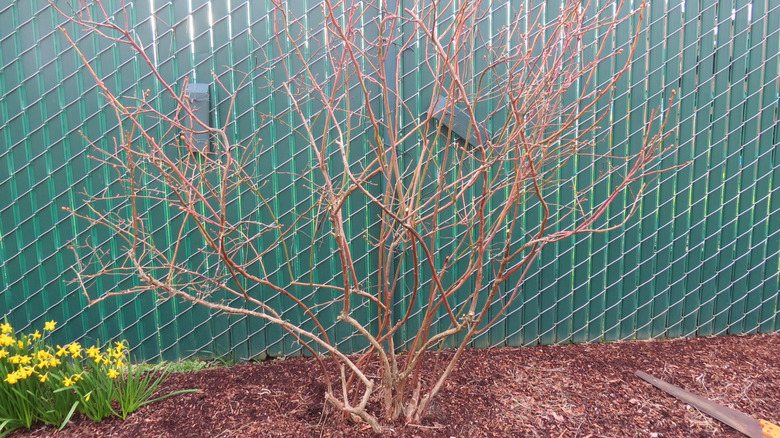The Blueberry Bush Pruning Tip To Keep In Mind During Winter For A Stronger Plant In Spring
Picking fresh berries from the garden is always exciting, especially when you have put time and energy into looking after the plant. If you have a bush in your garden or are growing blueberries in containers, you probably want to do everything you can to ensure it produces the best fruit. One essential when it comes to blueberry bush care is a winter prune, which sets it up for spring growth. When these bushes aren't pruned, they can become twiggy and dense with small fruit. This is because the best fruit is produced on canes that are two to four years old. When the older canes that give weaker fruit are left on the plant, the plant is not forced to produce new growth. Removing these unproductive canes allows the bush to concentrate on growing new, fruitful canes.
However, there are some mistakes to avoid when pruning blueberry bushes, as not all bushes should be pruned in the same way. How you prune it depends on how old it is. If you have a younger bush that is two years old or less, pruning should focus on training and shaping the bush rather than removing canes. When pruning younger blueberry bushes, you should remove any low-hanging or weaker stems and flower buds to allow the plant to focus on developing strong roots and canes. Blueberry bushes that are two to five years old also need light pruning every winter. For these bushes, simply remove the weak shoots and some small branches in the center to avoid overcrowding. Doing this will set it up for a healthy and productive season.
Best practices for pruning a mature blueberry bush
When blueberry bushes reach the age of six, they will need a harder winter prune to get rid of the unproductive canes. When you are pruning a mature blueberry bush, the goal is to have 12 to 18 canes of varying age with two or three new canes. That way, each cane is maturing, producing, and then aging at different times. Remove the weakest canes from the center of the bush and cut off those that are low to the ground. Then, take away some of the oldest canes. Older canes that aren't producing fruit will usually be easy to spot and remove, as they will be over an inch in diameter and have peeling, shredding bark. When pruning, take off any damaged twigs or stems. You should also do some trimming that lets sunlight reach the center of the plant, so you may wish to thin out some middle branches a bit.
When you prune your blueberry bush, go slowly, examining each cane and selecting ones to keep and ones to get rid of. You don't want to cut off viable canes, and pruning too much can mean that your bush produces less fruit. After you have finished pruning, your blueberry bush should look narrow at the base and open in the center. It should also be free from vegetative clutter, broken stems, and diseased or damaged growth. It takes time to learn how to prune your blueberry bush like a pro, but after a few years of practice, you will soon be able to assess each cane and remove the ones that need to go, leaving you with a healthy and fruitful bush season after season.

